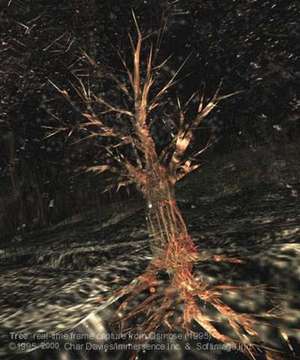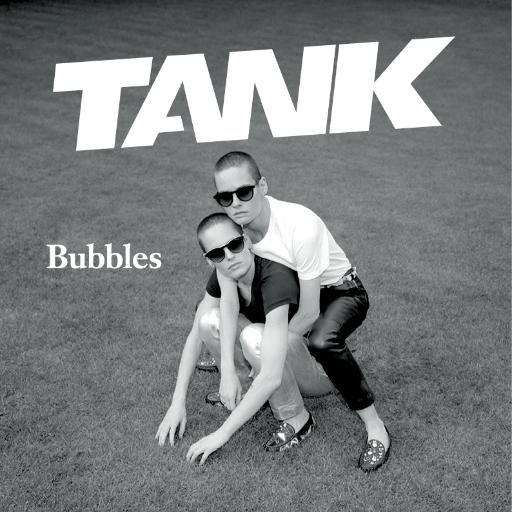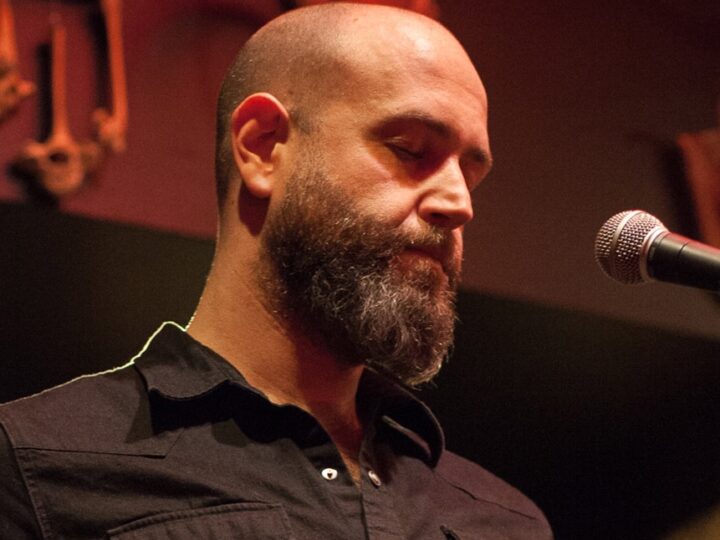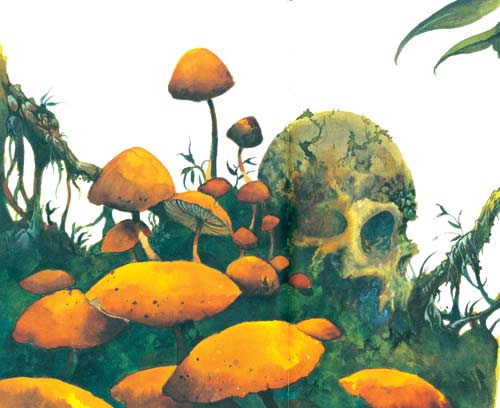
An early VR art immersion
One afternoon while deep-sea diving in the Bahamas, Char Davies got an unforgettable taste of virtual space. Floating over one of those yawning ocean trenches where Navy submarines prowl unseen, Davies and her companions found themselves suspended in a watery void. Only a thin rope stretched between their boat’s anchor and a nearby buoy helped them keep their sense of direction from being swallowed up.
They were waiting for sharks, and the sharks never came. The group became bored, restless for something to see, but Davies the electronic artists found her attention shifting away from the visual spectrum toward a more basic level of awareness. As the blond 41-year-old Canadian told me form her offices in Montreal, “Diving out over an abyss, where you don’t have a ground or coral heads to look at, you can get a very abstract and pure sense of space.” Beneath the waves, Davies started to slip into an altered state of consciousness. “It was the first time in my life that I entered a space where there was nothing to see, no separations between inside and outside. If you saw a little tiny speck, you didn’t know whether it was the glint in a barracuda’s eye, or a little jellyfish, or a misfiring of a rod in your retina. I guess I started accessing endorphins or something, because I really got into a trance.”
Inspired in part by this sparkle of underwater Zen, Davies created Osmose, a powerful virtual reality installation that’s light-years away from the trill-seeking VR games popping up in malls and theme parks. Developed at Softimage, whose graphics programs conjured Jurassic Park’s dinosaurs to life, Osmose uses a combination of the company’s software and additional customized code. It also runs on the kind of SGI hardware normally reserved for entertainment, big-budget science, and military simulations.
But Osmose is art: a sensuous, luminous, and deeply enveloping world of cloud forests, dark pools, and verdant canopies. Both technically and aesthetically, it’s a beautiful work, though Davies is up to more than just painting pretty pictures in 3-D. She’s attempting to give the virtual user – she prefers the more attrative term immersants – the kind of profound experience she had underwater: an embodied experience of space, one that begins to dissolve the habitual boundaries we maintain between inside and out, between self and world.
Osmose is a daring stab at expanding both the power and the meaning of virtual reality, and it does so by deepening the immersant’s subjective experience of the human-computer interface. In one sense, VR is nothing but a mess of code flitting about the binary guts of a computer – a dimension quite removed from the place that we human beings regularly see, feel, and explore. It’s the interface that transforms these digital bits into a world, that puts you inside. The interface disconnects your senses from the meaty realm of everyday life and tricks them into interacting with electronic signals as if they were the incoming impressions of another world. Which means that, in essence, virtual reality has very little to do with some chunk of machinery sitting on a desk. Virtual reality happens at the crossroads – the interface – between technology and human experience.
Osmose delivers experience big-time. Though the piece has been presented to the public at only a couple of galleries, Davies’s work has garnered praise and recently won CyberEdge Journal’s Virtual Reality Product of the Year award. VR designer and researcher Brenda Laurel called the work “breathtaking,” describing it as “a fundamentally powerful use of technology in the service of, dare I say, nature. There’s a healing there, not just of individuals, but of the technology itself.” Mark Pesce, cyberspace’s VRML wizard, simply proclaimed Osmose the first work of virtual art. Writing in the Dutch magazine Wave, Pesce called Osmose a “virtual kundalini, an expression of philosophy without any words, a sate of holy being which reminds us that, indeed, we are all angels.”
Even more intriguing are the firsthand testimonies of many immersants. Some find themselves weeping, slipping into a trance, drifting like elemental spirits. Others compare it to lucid dreams or out-of-body experiences. The head curator of the Musée d´art contemporain de Montréal made an extraordinary statement upon completing the journey: she was no longer afraid of dying.
These are pretty stupendous claims for VR, an overhyped, still sluggish medium barely past the larval stage. But something told me that these reports weren’t just fluffy techno-mysticism. I also knew that I wouldn’t be able to pass judgment on Osmose from afar. As with meditation or sex, only experience would do, so I booked a flight to Montreal.
A few days later, I find myself in a windowless room at Softimage’s stylish headquarters, my skull encased within a archetypal VR interface: the headmounted display. I know that this cumbersome unit allows the computer – in this case, an SGI Onyx – to squirt stereoscopic images directly into my eyeballs, coordinating the digital images with the movements of my body, which are detected by motion sensors on the helmet and vest, then tracked by a transmitter above. But the thing still feels about as natural as a welder’s mask designed for the Elephant Man.
Of course, Davies is a scuba diver, which means that she’s no stranger to putting on bulky gear to explore other worlds. She’s also accustomed to using the air in her lungs to control buoyancy, which is why Osmose graphics whiz Georges Mauro is strapping a harness around my chest. This is the novel interface that helps make Osmose such an unusual experiment in VR. Davies explains that expanding and contracting my ribcage will allow me to ascend and descend through Osmose’s “Life-world.” I will breathe my way through her world.
The first realm I find myself floating inside is an abstract lattice that reminds me of the skeletal wireframe models that underlie most 3-D computer graphics. I have no body at all – thankfully, Davies didn’t include any of “those horrible little hands” featured in much VR. Lusciously sampled human voices create a swirling soundscape about me as I tentatively explore this isolated cyberspace by leaning in the direction that I want to propel myself.
Soon the Cartesian coordinates melt into a forest clearing centered around a crystalline tree. Transparent and bony, it’s one of the few things in Osmose with sharp edges, and it anchors the piece’s various spaces like the world tree of ancient myth. At the boundaries of the clearing, I phase into a forest zone, which surrounds and enfolds me in an ambiguous play of shadow and luminous surfaces. leaves become veils become abstract blotches, shaping the space the way the afternoon sun fills up a glade with planes and clusters of light. All this is very strange and entrancing, and I give into it, glimpsing faces where Davies later insists there are none.
Plunging through the soil, I enter a dark underworld where a stream of tiny lights flow into the roots of the spindly world tree, suggesting the great suck of material life. Digging even deeper, I come upon scrolling walls of green alphanumeric characters that reproduce all 20,000 lines of John Harrison’s customized Osmose code, which allows Mauro’s complex models and animations to run in real time. Later, Davies explains that she wanted to highlight Harrison’s creativity and to “ground the work in the technology.” But while the code reminds me that Osmose’s “natural world” is a technological construct, I desperately wanted to return to the seductive images above. Then I discover that it’s harder to breathe my way upward than to sink.
I cram my lungs full of air and begin to ascend. After passing through the clearing, I enter an upperworld of text, where a labyrinth of quotations enshrines the authors – Heidegger, Rilke, Thoreau – who have inspired Davies in her quest to understand the nature of being: “The world is large, but in us it is as deep as the sea”, “By changing space, by leaving the space of one’s usual sensibilities, one enters into communications with a space that is psychically innovating…For we do not change place, we change our Nature.”
But I’m having too much fun to think, and I hang glide through words like immensity and space-blend as I make my way back to the clearing. Besides, the attention I’m paying to my breath is starting to pay off. In my nonvirtual life I practice my breath as one of the most profound interfaces between mind and body. Occupying a boundary zone between conscious awareness and the autonomous processes of the flesh, breath is a fluid boundary zone, drawing the outside in, and unfolding the inside out. By giving the breath center stage, Osmose not only melts down these boundaries, but draws the “meat” into the trip., Moving through Davies’s world, I feel at once immaterial and embodied, angelic and animal. I move like I do in lucid dreams, vaporous and invisible, and yet I’m constantly returning to the root of breath and balance.
I don’t know whether it’s the deep breathing or the images, but I’m definitely slipping into an odd state of mind. The fuzzy organic pixels around me are starting to resonate. Flashes of dreams, mushroom trips, and poems hit my brain stem with the immediacy of scent. I recall the time I ran down a beach surrounded by a flock of sandpipers, so light and small they resembled butterflies. Even the restless desire to explore the Osmose world dissipates, and so I just rest awhile, luxuriating inside a spectacle that has become experience.
Despite all this gentle psychedelia, I’m not prepared for the end of the piece, which the Osmose crew usually initiates after about 15 minutes of immersion. Suddenly I’m thrust outside the Life-world, which now appears as a luminous gray pinto bean set against starless space. I struggle to zoom back inside, but the world slips away, further into the gloom. When I realize I cannot return, I’m struck with a powerful mixtures of resignation and melancholy. Awe surges through me. So this is what that woman meant by facing death.
Not everyone digs Osmose. The electronic arts scene is chock-full of skeptical post-moderns and critical politicos; a number of these folks find Osmose simpleminded or fluffy, its entrancing organic evocations misguided and suspect. The highbrow London art-punk technojournal Mute laid into Davies with the kind of savage snootiness only overeducated Brits can muster, dismissing the piece as an “electronic mushspace” and accusing her of “naïve nature-nostalgia” and “contrived technoblindness.” (Are hyphens passé?) After comparing Davies’s environmental concerns with the Unabomber’s violent neo-Ludditism, the authors suggest that the two should marry and produce “little virtual bomb babies.”
Mute’s attack may stray into juvenilia, but many of the artists and critics who upbraid Osmose are right to highlight the deep paradoxes of making art in a digital age – paradoxes that Osmose at once demonstrates and ignores. There are sharks in the virtual waters, even if you don’t see them during your cyber-epiphany. First, there is the irony that Davies is attempting to “heal the estrangement between ourselves and ‘nature'” with the same SGI mainframes that train fighter pilots to blow it up.
Then there’s the paradox of making art at the edge of a gargantuan multinational industry. Throughout the ages, artists have usually relied on patrons of one sort of another, but the high cost of cutting-edge equipment forces those artists who are even able to get their hands on high-end tools into all sorts of anxious compromises. Osmose is about as high-end as it gets, and though Davies’s work has not been drawn into the typical sponsorships and marketing campaigns that define much corporate involvement in the arts (she still has to borrow an Onyx for SGI when she does public shows), there piece is still dependent on a world of technological privilege that troubles many artists.
Then again, Davies occupies an unusual and enviable position as an independent creator. Having worked for Softimage for nearly a decade, she now serves as the highly successful firm’s director of visual research – which basically means it gives her room to push the envelope on technologies other electronic artists have fever-dreams about. It’s an almost unheard of situation for an artist, electronic or otherwise, and one that can tinge her answers with defensiveness. Regarding criticisms of Osmose, Davies says that “it’s very hard to sort out what are useful insights into the work and what is jealousy.”
Not that she ever set her sights on big bucks or high tech. When she first encountered computer graphics in 1983, Davies had been living a hand-to mouth bohemian existence for years – selling her paintings, traveling to China, living on a logging camp, and working on the occasional film. Then a piece of computer animation by Daniel Langlois caught her eye. Here was a medium that might be able to capture the aesthetic vision she had been struggling to squeeze into the two-dimensional plane of canvas: an enveloping, luminous space devoid of solid objects.
But Langlois told her to wait until someone built animation tools that could be used as easily by artists as by engineers. In 1986, when Langlois founded Softimage, he became that someone. Davies and Langlois also became a couple, and a year later she decided to help out at the company, plunging into what she calls the “straight world” she had so far avoided. After years of benefiting from the 80-hour-weeks typical at technological start-ups, Softimage grew into the leading software developer for computer animation, and Microsoft bought the house in 1994. Davies certainly paid her dues, and she also got paid in full.
But strong art can never be reduced to money alone. Davies is an artist possessed by aesthetic vision that has nothing to do with high technology; when the tools availed themselves, she used them. And it’s the integrity of her vision that has enabled her to bypass the mediocre didacticism and conceptual self-consciousness of much digital art. Moreover, her vision does not program the reactions of its audience, but allows them to evolve organically. Osmose is not a message, but a mirror. As Mark Pesce pointed out, “What you encounter in Osmose is yourself.”
So it makes sense that people have such widely varying reactions to there work. One contributor to the virtual worlds mailing list found Osmose boring and “too New Age” and dismissed Davies’s breathing interface as “gratuitous.” He contrasted this with a virtual world he’d heard about in which you control objects with your brain waves (“This opens doors…”). I can only say that he experienced a different piece than I did.
The notion that Osmose is New Age particularly irks Davies. “I’m not the one who says it’s a mystical work,” she points out, having mostly avoided the kind of metaphysical speculations that drift through the New Age wing of technoculture. She also bridles at the idea that Osmose simply represents a naïve, hippy-dippy idealization of nature. As davies says, “It’s got nothing to do with representing nature. It’s to help people awaken an aspect of themselves – another sensibility, a different quality of being.”
To explain her aesthetic approach to the organic world, Davies contrasts two artistic strategies: illustration and evocation. Illustration is literalistic, like the forests and streams of Disney animation, and it’s this type of digital realism that drives most VR.
Osmose does not illustrate nature. You hear no birds or crickets; you see no solid tree trunks or obvious sources of light. A lot of the time you’re not sure what you’re seeing. The most interesting places in Osmose lie on the overlapping edges between forest, earth, and water; it’s this rich ambiguity that itself evokes such powerful responses in people. The dappled planes and fuzzy lozenges of light you encounter in Osmose don’t look like forest, they feel like forest.
Osmose’s evident power to evoke deep emotional – even spiritual – responses is as much a technical issue as an aesthetic one. From the beginning, Davies didn’t want typical VR, which she describes as “hard edged, solid objects in empty space.” So her team created transparent and translucent texture maps, which dematerialize Osmose’s objects and produce the spectral quality of subdued stained glass. To avoid “empty space,” they wrapped some nearly transparent texture maps around densely folded geometry crumpled throughout Osmose’s various worlds. They also used particle systems to create clusters of iridescent worms, fish, and fireflies that scurry and drift about you.
With their images and animations, Davies and Mauro also destablized the usually stable relationships between figure and ground. Most of us learn about this kind of figure-ground ambiguity from the classic Psych 101 textbook illustration that combines an image of an old hag with that of a young woman. In Osmose, what seems at first like a flower melts into a green backdrop, or vague luminous space morphs into a cluster of twigs. Your eye flip-flops between the various possibilities; you must unconsciously “decide” what you see.
Like a Rorschach blot, this graphic ambiguity seduces us out of ourselves in order to embody the world before us, using whatever associations and resources our consciousness can muster. “When art evokes, it’s drawing on the experiences of the user,” Davies explains. “It becomes interactive on a much more subtle level.” In Osmose, you’re not walking through some picture-postcard simulation of the great outdoors; you’re walking through the wet and wild spaces you carry within, the organic, subterranean zones of reverie and dream. As Brenda Laurel pointed out, “The dirty little secret is that she’s motivating people with ecstasy.”
Davies is pleased that Osmose’s evocative pixels and spatialized sound provoke something like a religious experience in some people, but she takes no credit for it. “To me, Osmose looks at immersive space as a place where we can explore what it means to be embodied conscious being. That’s not New Age. It’s not necessarily spiritual. It’s about human experience.”




